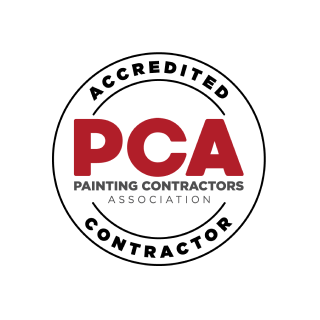Painting a workspace might seem simple, but it’s much more than just applying color to the walls. The right paint job can transform an ordinary room into a vibrant and inspiring environment for teams to thrive. Whether you’re refreshing an old office or designing a new space, understanding the best techniques and strategies can make all the difference. From selecting colors that resonate with your brand’s identity to knowing how to properly prepare surfaces before getting started, each step is essential in creating an appealing atmosphere that enhances productivity. So, let’s dive into some practical commercial painting tips that will help you achieve a professional finish while keeping your workspace stylish and inviting!
When painting workspaces, opt for neutral colors to create a professional atmosphere while using warm tones for comfort. Additionally, consider incorporating elements like textures and artwork that resonate with your brand, and ensure that high-quality paints are used to enhance durability and maintain a polished appearance.
Choosing the Best Colors for Your Workspace
When it comes to selecting colors for your workspace, it’s not merely a decorative choice; it’s a strategy that shapes the work environment. For instance, light colors like soft blues and greens promote calmness in high-stress settings, while more vibrant hues evoke energy and vibrancy. Imagine walking into a brightly colored office where orange accents are peppered throughout—such touches can ignite creativity and foster collaboration among team members.
Psychological Impacts of Colors
The psychology of colors is an intricate web of emotions tied to specific hues. Studies reveal that warm colors like yellow and orange not only brighten a room but also evoke feelings of warmth and friendliness. When employees work in collaborative spaces adorned with these warm tones, they often find themselves more open to communication and teamwork. In contrast, cooler shades create tranquil zones that encourage focus and reduce anxiety—ideal for task-oriented areas like conference rooms or individual offices.
Interestingly, neutral tones such as white, beige, or muted gray offer a different dynamic. They convey professionalism, creating an organized appearance. However, an overreliance on neutral colors may inadvertently bring about an atmosphere that feels sterile or even cold. Balance is essential; using neutral colors as a backdrop enhanced with strategic splashes of brighter tones maintains energy without overwhelming the senses.
Culture and Brand Influence
It is also critical to consider cultural implications and brand identity in your color choices. Each culture associates certain colors with various meanings; for example, blue might symbolize trustworthiness in one culture but could be perceived differently elsewhere. If your company has a distinct color scheme—say, royal red—it makes sense to incorporate this color thoughtfully into your workspace design. Perhaps red accent walls or art pieces reflect brand identity while keeping the overall environment inviting and not overpowering.
That said, moderation is key! Utilizing too much of an intense color can lead to overstimulation. The goal is to ensure that any brand-related colors enhance rather than dominate the space. Thoughtfully employed within your design elements—think textile upholstery or artwork—they can reinforce a cohesive atmosphere encapsulating your brand values.
As these ideas take shape in the context of your workspace, keep in mind that how you implement colors through thoughtful design will further their impact, merging aesthetics with functionality seamlessly.
Essential Painting Techniques
When it comes to painting workspaces, understanding and mastering essential techniques can make all the difference between a mediocre outcome and a truly professional appearance. Proper painting techniques enhance aesthetics and improve durability, ensuring the colors last through wear and tear. A great start lies in surface preparation, as it establishes a strong foundation for your paint.
For instance, a clean, dry, and smooth surface is non-negotiable; dust, grease, or any peeling old paint needs to be addressed first. Many professionals will tell you that skipping this step may lead to problems like uneven coverage or premature peeling. Don’t overlook the importance of sanding rough spots and applying an appropriate primer—especially vital for older buildings where surfaces may have gone neglected for years.
Once the foundation is ready, it’s time to tackle the edges.
The next crucial technique is cutting in. This process entails carefully painting around edges and corners where walls meet ceilings or baseboards using a brush before transitioning to a roller for broader areas. Angled brushes are particularly favored by professional painters because they allow for greater control and precision in tight spots.
Not only does cutting in create cleaner lines, but it also prevents any accidental overpainting on trim or surrounding surfaces—a detail that can elevate the entire job from satisfactory to impeccable.
After mastering the edges, we move into applying paint on larger surfaces.
When it’s time to cover large areas, utilizing rolling techniques becomes key. Begin by applying paint in a “W” pattern; this method helps achieve even coverage and avoids those pesky lap marks that can appear when paint dries unevenly. After establishing the W pattern, carefully fill in the gaps to ensure full coverage across the area.
Additionally, employing an extendable roller handle simplifies access to high or hard-to-reach places while minimizing physical strain—making the process easier on your back and shoulders.
By strategically employing these essential painting techniques, you’re on your way to creating not just a beautiful workspace but one that stands resilient against time and use.
Alongside mastering these techniques, setting up your area effectively can pave the way for a successful painting experience. Let’s explore how best to configure your surroundings for optimal results.
Preparing Your Workspace for Painting
When you decide to paint a workspace, the actual preparation can make all the difference. You want to create an environment that not only looks good but also allows for an efficient working process.
First, let’s talk about clearing the area. Imagine walking into a cluttered room where furniture is crammed together. It’s hard to concentrate on your task when surrounded by distractions. Instead, take a moment to carefully remove all furniture, decor, and equipment from the workspace. This step reduces the risk of damage and ensures you have enough space to move around comfortably.
Once you’ve cleared the area, it’s essential to focus on cleanliness before any brush strokes touch the walls.
Next comes the importance of cleaning the walls. Dust and grime can detract from paint adhesion, leading to uneven surfaces in the end product. Use a mixture of warm water and a mild detergent to scrub down those walls. Picture it like washing your hands before cooking; it sets the stage for everything that follows. Allow plenty of time for them to dry completely; this step will ensure that when you apply that first coat of paint, it adheres smoothly without interruption.
With clean walls prepared for painting, it’s time to consider any imperfections that need addressing.
Another vital part of preparation is repairing damages. Examine your newly cleaned walls closely—are there holes or cracks? Your perfect paint job deserves a smooth base beneath it. Fill in those imperfections with spackle or joint compound using a putty knife until they are flush with the wall’s surface. Once everything is dry, take sandpaper to smooth those areas out, creating an even texture that will enhance your final look.
As you inspect the walls and get them ready for paint, it’s also important to think about how you’ll achieve those cleaner lines once the painting begins.
Enter painter’s tape—your best friend during any painting project. Carefully tape off baseboards, door frames, and windowsills so that your lines remain crisp and clean. This little strip of adhesive may seem trivial, but when you peel it back at the end of your project, you’ll be glad you took the time for this extra layer of precision.
Finally, let’s address one last critical element before we proceed: ventilation.
Ensuring proper ventilation is paramount. Open up windows whenever possible and use fans to circulate air throughout the room. Good ventilation not only speeds up drying times but significantly reduces inhalation of harmful fumes—keeping both you and the space safe while working. Your health matters as much as achieving flawless finishes!
With your workspace properly prepped, you’re primed for techniques that elevate your project’s results further as you enhance surfaces with staining and coating.
Professional Staining and Coating Tips
When it comes to staining wood, the first rule of thumb is simple: test before you apply. This might seem trivial, but choosing the right stain can dramatically affect the appearance of your project. Always dab a bit of stain on an inconspicuous spot; this allows you to see how the wood reacts to the color before committing to that entire tabletop or trim piece.
As you begin to apply the stain, whether using a brush or a cloth, always follow the wood’s natural grain. This technique not only enhances the beauty of the wood but also ensures a more even finish. After applying the stain, make sure to wipe off any excess promptly. Leaving too much stain on the surface can lead to unsightly blotches that detract from your work.
Applying Protective Coatings
Once your stain has dried appropriately, which usually takes at least several hours depending on conditions, consider adding a protective coating like polyurethane or varnish. These products safeguard against wear and tear while providing an added sheen that enhances your woodwork’s aesthetic appeal. For painted surfaces, these coatings can be particularly invaluable—they help withstand high traffic and prevent scratches.
To achieve the best results when applying these coatings, consider working in a dust-free environment. Any particles in the air can land on your freshly painted surface and create an uneven look once dried, undermining all your careful efforts so far. I often recommend preparing the area by closing windows and ensuring good ventilation to avoid dust settling down during application.
The application process itself is key; having good tools will simplify this step significantly. It’s essential to be well-prepared with quality materials for optimal results as we explore what should be included in your toolkit for these tasks.
Tools and Materials for Quality Paint Jobs
When it comes to painting, using top-notch tools and materials is like having a solid foundation for a house; everything else builds upon it. For instance, take angled brushes, which are perfect for reaching tight spots and creating sharp lines along edges and trims. A good angled brush can make all the difference in achieving that professional look, allowing you to work with precision while minimizing slips that create messy corners. Imagine standing back and admiring crisp edges that speak of your craftsmanship, all thanks to the right brush.
Next on the list is the roller and tray. These come into play when you’re ready to tackle larger surfaces like walls or ceilings. Rollers allow for an even application and can cover more area quickly, saving you time and energy. Opting for higher-quality rollers ensures that you’re less likely to face issues like lint shedding into your freshly painted surface. Always look for those designed specifically for your type of paint—be it latex or oil-based.
Remember: While you might think of painter’s tape as just an accessory, it can be a game-changer. It protects edges and delivers those clean lines that every painter craves. Using painter’s tape ensures that distinct color transitions are smooth rather than jagged. However, it’s crucial to remove the tape carefully once the paint is dry; pulling it off too hastily can lead to peeling.
To safeguard your floor or furniture during the painting process, investing in durable drop cloths is important. It’s always better to err on the side of caution, as accidents can happen. Quality drop cloths not only catch drips but also prevent dust and debris from mixing with your fresh coat of paint.
Surface preparation is pivotal before the first stroke of paint hits. This brings us to sandpaper; with its various grits available, this tool enables you to prepare surfaces by smoothing out imperfections. Keep in mind that different textures may require various grits, so it’s important to test out what works best for your project.
Finally, an extension pole is essential for those hard-to-reach areas—think high ceilings or tall walls. Instead of risking a ladder or contorting yourself into awkward positions, an extension pole lets you maintain both safety and efficiency without straining your back.
| Tool | Purpose |
|---|---|
| Angled Brushes | Precision painting for edges and trim |
| Roller and Tray | Even application over large surfaces |
| Painter's Tape | Protects edges for clean lines |
| Drop Cloths | Protects floors and furniture |
| Sandpaper | Prepares surface by smoothing out flaws |
| Extension Pole | Reaches high or awkward areas |
Each tool and material lays the groundwork for quality work as a commercial painter, ensuring effective application and lasting results that elevate any workspace’s appearance.
Long-Lasting Visual Enhancements
When it comes to maintaining the aesthetics of your workspace, a proactive approach goes a long way. This not only involves periodic touch-ups; you also need to think about protective measures that can truly enhance longevity. Picture a beautifully painted wall that welcomes clients and inspires employees—now imagine that same wall marred by scuffs and stains after just a few months because it lacked that extra layer of protection. Investing in long-lasting visual enhancements might seem like an added expense, but it’s one that pays dividends in durability and appearance.
Wall Protectors and Corner Guards
Installing wall protectors and corner guards is like adding armor to your walls. These features shield against impacts and scuffs, especially in high-traffic areas where furniture gets moved around or people are coming and going frequently. Think of them as the unsung heroes in your office design; they prevent damage before it occurs, which means less frequent touch-ups.
Their presence can enhance the character of the room while keeping the surfaces pristine, making them an intelligent investment in maintaining that new look.
Routine Maintenance
Regular maintenance cannot be overstated. Professional painter Jane Doe emphasizes this point with her advice: schedule regular inspections to catch small issues before they spiral into major problems. “A bit of maintenance goes a long way,” she says, “and it helps keep the workspace looking fresh.” This could mean a quick check for paint chips, organizing clutter, or touching up small blemishes. By forming a routine maintenance schedule, you not only keep your environment visually appealing but also enhance productivity among employees who enjoy working in such well-kept surroundings.
Use Durable Paint
Opting for high-durability, washable paints is one of the most effective methods to preserve beauty in areas prone to stains. Unlike standard paints that might degrade with frequent cleaning, durable options are designed to withstand scrubbing and remain vibrant over time. If you’ve ever scrubbed a wall only to see the color begin to fade or discolor—it’s frustrating! Investing in durable paints ensures that you won’t have to go through that experience too often.
Paying attention to these details will help keep your workspace visually appealing and functional for years to come.
By applying commercial painting tips—installing protective elements and establishing a well-planned maintenance routine—your workplace can become an aesthetically pleasing and productivity-boosting environment. For more information or professional painting services, reach out through American Classic Painters.









